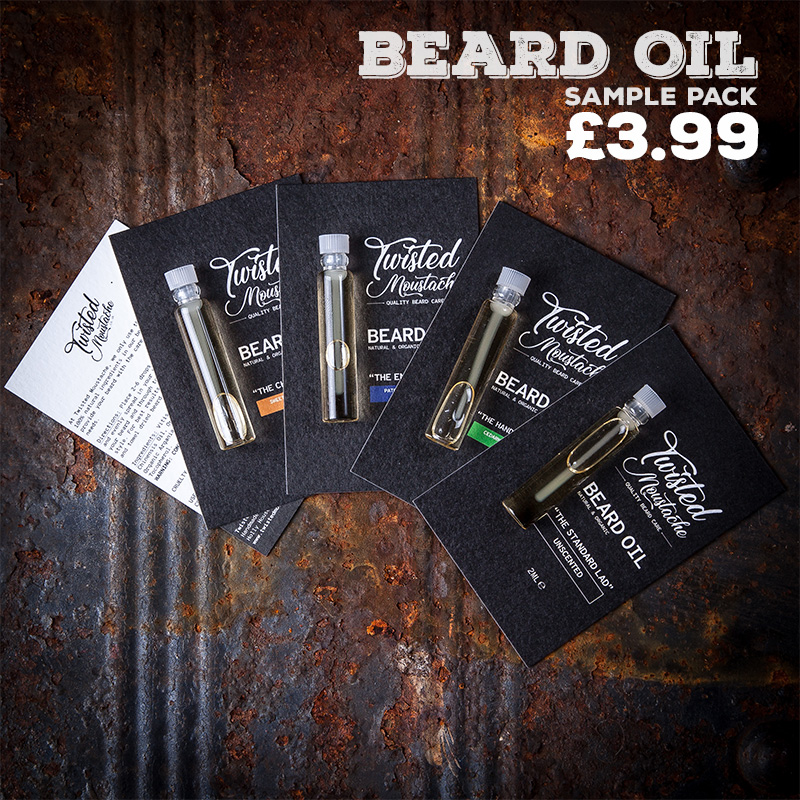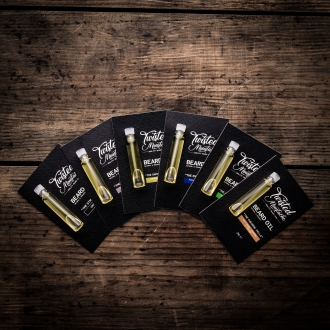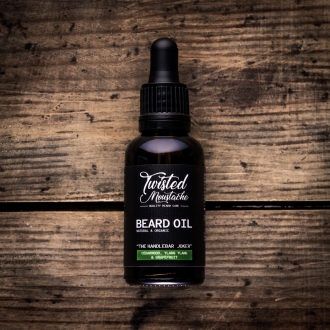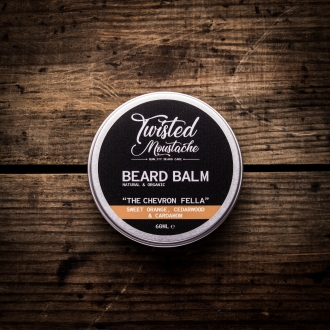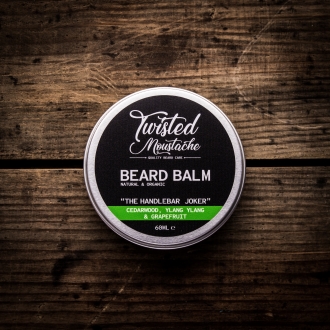How to Maintain Your Skin and Hair Health in a Heat Wave
By Jack Shaw (Guest Post) | Last updated 31st July 2025 The U.K.’s summer months have become marked by prolonged high temperatures and heat wave conditions. These climate changes aren't just uncomfortable — weather patterns and health challenges demand proactive grooming and lifestyle adaptations.
The U.K.’s summer months have become marked by prolonged high temperatures and heat wave conditions. These climate changes aren't just uncomfortable — weather patterns and health challenges demand proactive grooming and lifestyle adaptations.
Whether you're navigating London's urban heat island effect or protecting yourself in the typically cooler northern regions, your skin and hair require dedicated heat wave protection. Discover practical advice for maintaining optimal skin and hair health during extreme weather. These tips can help you stay comfortable, protected and looking your best.
Understanding the Impact of Heat on Men's Skin and Hair
Heat waves can provoke or worsen skin conditions, including heat rash, eczema, rosacea and hyperpigmentation disorders like melasma. UV exposure and heat also accelerate collagen breakdown, leading to premature ageing.
Hair and Scalp Vulnerability
Direct sun exposure can cause scalp sunburn, an often overlooked but potentially serious issue. Heat and humidity increase sebum production, producing oily, limp hair that feels heavy and uncomfortable. Excessive sweating can exacerbate dandruff and scalp irritation, while the salt in your sweat can dry out hair strands, making them brittle and prone to breakage.
Environmental Amplifiers
During a heat blast, like the June 2025 one that prompted a yellow heat-health alert from the U.K. Health Security Agency, airborne irritants create secondary pollutants that irritate and inflame the skin. This is particularly relevant for urban dwellers who face the double challenge of heat and pollution.
Essential Skin Care Tips for Men During a Heat Wave

For daily cleansing, switch to a lightweight, gel-based cleanser that removes sweat, oil and pollutants without overstripping your skin. Cleanse twice daily — morning and evening — using lukewarm water. Carefully cleaning your face daily helps limit the long-term pollutants your skin is exposed to.
Use a Smart Moisturiser Strategy
Apply light, gentle moisturiser immediately after washing up. During a heat wave, swap heavy creams for water-based formulations that won't feel suffocating. Apply to damp skin to lock in moisture more effectively.
Consider Sun Protection Nonnegotiable
Apply SPF 30 sunscreen as a minimum level of protection for daily use and SPF 50 for extended outdoor exposure. Reapply every two hours or immediately after swimming or heavy sweating. Don't skip sunscreen due to greasiness concerns. Modern formulations offer a mattifying effect. Look for varieties labelled as sport or dry touch.
Indoor climate control can help protect skin from environmental stressors like excessive heat or dry air. Fluctuating temperatures can contribute to oil imbalance, sensitivity and dehydration. If your notice issues like significant temperature swings or condensation form on your windows, it might be a sign that your HVAC system is working inefficiently. Keeping your home cooling updated and functional can support better humidity regulation and keep your indoor environment gentler on your skin.
Manage Acne and Irritation
Heat-induced breakouts require targeted intervention. Look for products containing:
Salicylic acid: Penetrates pores to clear oil and dead skin
Niacinamide: Reduces inflammation and controls oil production
Zinc oxide: Provides sun protection while calming irritated skin
Avoid alcohol-based toners, which can increase oil production as your skin compensates for overdrying. If you have a beard, apply a moisturising beard balm to help avoid the itchiness and beard dandruff that can come with excessive heat.
Create a Nighttime Recovery Routine
Use topical antioxidants like vitamin C in your morning routine to mitigate oxidative stress, but save retinoids for the evening. Apply a cool hydrating serum before your night moisturiser. Consider keeping skin care products in the refrigerator for an extra cooling effect.
Hair and Scalp Care Strategies for Hot Weather
When your beard grows longer, keep the beard washing to once or twice a week to prevent overdrying. The scalp requires different treatment during an intense wave of heat. Increase shampooing to every other day if you're sweating heavily, using a gentle, sulfate-free formula that won't strip natural oils.
Scalp Protection
The scalp often gets overlooked when it comes to sun care, but it’s just as vulnerable to UV damage as the rest of your skin, especially along the hair part or thinning areas. A wide-brimmed hat is an easy way to keep your scalp protected. If hats aren’t your thing, SPF sprays designed for hair can be applied to the part and exposed scalp areas. There are also scalp-specific sunscreens that offer direct protection while staying invisible and style-friendly.
Hydration Without Weight
Switch to lightweight, leave-in conditioners that provide moisture without heaviness. Apply to mid-lengths and ends, avoiding the scalp to prevent greasiness. Look for ingredients like coconut water, aloe vera and lightweight oils, such as argan or jojoba.
Sweat and Oil Management
Dry shampoo becomes your best friend when temperatures soar. Apply to roots before sweating heavily — it works better as a prevention than a cure. Use blotting papers on your scalp for an immediate refresh, or rinse with cool water and towel dry gently.
Heat Damage and Breakage Prevention
Blow drying can damage your hair and beard, especially if you’re using a cheap dryer without heat adjustment options. Air dry your hair when possible and keep the blow dryer on a cool setting. Use heat protectant sprays before any styling sessions and limit heat styling to special occasions.
For facial hair, use beard balms with a light hold that balances style and comfort with summer heat, and opt for lighter products to prevent your beard from feeling heavy.
Foods That Boost Heat Resistance
Antioxidant-rich foods help support skin repair and protection:
Tomatoes: Lycopene provides natural UV protection.
Green tea: Polyphenols fight inflammation.
Fatty fish: Omega-3s maintain skin barrier function.
Berries: Vitamin C supports collagen production.
Hydrating Habits
Experts recommend drinking at least 64 ounces of water daily, and if consuming alcohol, match each drink with a glass of water. Regular water intake hydrates your body and beard while lessening the risks of split ends and breakage. Front-load your hydration — drink a large glass upon waking, and maintain a steady intake throughout the day rather than playing catch-up.
Alcohol and excess caffeine can dehydrate, compromising your skin's ability to cope with heat stress. Limit caffeine after midday to avoid interfering with restorative sleep. You can also choose foods high in water — like watermelon or cucumbers — to support your hydration.
Grooming Product Recommendations for Heat Waves

Your summer grooming products should be oil-free and lightweight to avoid clogging your pores or feeling heavy. SPF-based products offer multi-tasking protection. In addition, look for cooling or water-resistant ingredients that withstand sweat and humidity.
Knowing what ingredients to embrace and which ones to avoid can help you select the right grooming products. Embrace ingredients like:
- Hyaluronic acid: Helps boost skin hydration and rejuvenation
- Niacinamide: Controls oil whilst reducing inflammation
- Zinc oxide: Provides broad-spectrum sun protection
- Aloe vera: Cooling and anti-inflammatory
- Witch hazel: A natural astringent for oil control
Avoid products that include ingredients like the following:
- Heavy oils: Coconut and argan in large concentrations
- Alcohol-heavy formulas: Can trigger rebound oil production
- Petroleum-based products: Traps heat and clogs pores
- Synthetic fragrances: Irritate heat-sensitive skin
Look for terms like lightweight, non-greasy, quick-absorbing and cooling. Avoid products marketed for intense moisture or rich hydration — save these for winter months.
Lifestyle Adjustments for Maximum Protection
Due to climate change, heat waves — like the U.K.’s June 2025 one — are expected to continue growing in frequency and intensity. The extreme temperatures highlight the need for lifestyle adjustments to enhance comfort levels.
Choose lightweight clothing made from breathable, natural fibres to help your body stay cool and dry. Avoid clothing made from synthetic fabrics. Light colours reflect heat better than dark shades.
Invest in UPF-rated clothing that provides measurable UV protection for outdoor work or extended sun exposure. When heading outdoors, wear a wide-brim hat. Try a pair of UV-blocking sunglasses, and protect your arms from UV rays with long-sleeved shirts.
Time Your Activities
U.K. Health Security Agency warnings emphasise checking on vulnerable people and taking sensible precautions while enjoying the sun. Plan outdoor activities for early morning before 10 a.m. or late afternoon after 4 p.m. when UV intensity is lower. If midday exposure is unavoidable, seek shade.
Practice Post-Sun Care and Recovery
Take skin-soothing showers in cool or tepid water. Cold water helps your beard by sealing moisture while preventing frizz and soothing inflamed skin. Cool baths or showers also help regulate body temperature, but avoid hot water, which strips skin of natural oils.
Apply a cooling after-sun product containing aloe vera or hydrocortisone to any irritated areas. For a refreshing finish for facial hair, use beard oil with grapefruit and cedarwood scents. Beard oil helps you gain more control over your beard's style and moisturises the skin under it.
Build a Resilient Summer Grooming Routine
Everyone’s skin and hair are different, so base your milestones on individual goals. Start with one change and build gradually. Trying one new product at a time will help you pinpoint the irritant if you start experiencing breakouts or other skin issues.
Consider adopting this daily heat wave protocol:
Morning Jump-Start — 5 minutes
- Wash your face with cool water and a gentle cleanser.
- Apply lightweight moisturiser with SPF 30+.
- Use leave-in hair conditioner on damp hair.
- Apply antioxidant serum, if time permits.
Midday Refresh — 2 Minutes
- Blot excess oil with a clean tissue.
- Reapply sunscreen to the face and scalp.
- Apply dry shampoo to your roots if needed.
Evening Recovery — 10 Minutes
- Thoroughly cleanse your face to remove sunscreen and pollutants.
- Apply cooling toner or serum.
- Apply night moisturiser.
- Once per week, gently exfoliate your skin and apply a hair mask.
Keep products visible and easily accessible. Set phone reminders for sunscreen reapplication until it becomes automatic.
The Investment Perspective

Quality heat wave grooming is about more than immediate comfort. It's also about protecting your skin's long-term health and appearance. The heat and UV radiation can lead to premature ageing. Consistent protection now prevents costly corrective treatments later.
Heat Wave Action Plan
With temperatures several degrees higher, taking care of your skin and hair is essential. Prepare for summer heat waves by upgrading your sunscreen, switching to light-weight moisturisers and increasing your water intake. Your future self and skin will thank you when the U.K.’s next heat wave arrives.
Summer grooming is about more than looking good on the hottest days. It's also about building resilience for a new reality of extreme heat that's likely here to stay.
Jack Shaw is a writer, editor and grooming enthusiast. His explorations of men’s health, fitness and fashion can all be found on Modded, a men’s lifestyle publication on which he serves as the senior writer. Reach out to him via LinkedIn or see more from him by subscribing to the Modded Minute.


